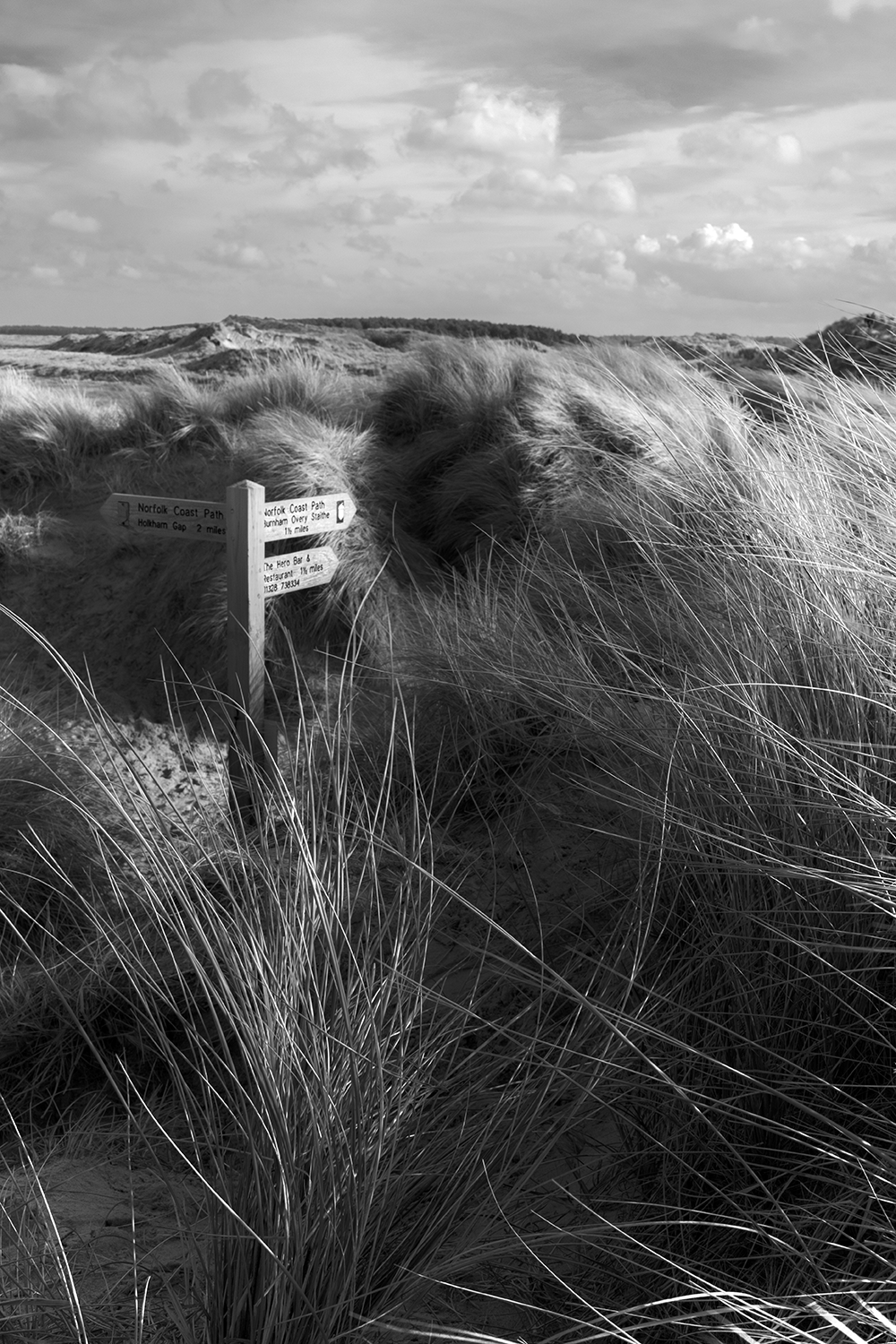Over the past few months of confinement at the behest of COVID-19 , many photographers I know have spent an interminable amount of time in front of a computer. I see this as a mixed blessing. It’s great to have the time to curate all the images that have been parked on hard drives, but the number of images to organise can be overwhelming. A selected few images are really nice to share with the photographic community on social media, not for the ‘likes’ but to inform and enthuse one another about our various equipment and activities, challenges and aspirations. Digital photography looks amazing on a back lit screen but there’s always the temptation to retain many variations of a similar scene or composition, without having to commit to the ultimate ’keeper’. For instance, I couldn't choose between the two images below taken at Cley-next-the-Sea, but then I was spoiled with a great sky on both early morning forays.
I have also pondered the impermanent nature of images on a hard drive, which may not be transferrable to a new device when the hardware fails or when access is denied due to computer software updates. Then there are the hazards of lost passwords, not to mention a house fire or lightning strike which could all render the hard drive useless – that’s a lot of eggs in a slightly precarious basket. I haven’t yet signed up to an external backup.
I feel that a library of digital images needs to be edited down to your best work so that your experience of a place or occasion, the reason that you were attracted to the visual and your intention when taking the pictures are all understood by the viewer, free from the distractions of a myriad of similar images viewed as thumbnails.
But why do we make these images if there is no tangible outcome? I am certainly drawn more to a beautiful print than I could ever be drawn to an electronic photo frame with digital images displayed on a loop. But the ultimate finished product for me is a book. “Existentially, books help to connect you to the natural world, while data tethers you to the artificial world”. In a power cut, or if the internet is down, your book will still work perfectly. When you pick over the photographs on a hard drive, there is no second-hand value to the culled images. Books have a physicality, with the weight, texture and thickness adding to the experience. You can physically feel your progress through a book. You can write in the margins and use ephemera from your photography trips, or even your thumb, as a bookmark. Unlike digital catalogues, books are designed for slow processing, inviting a physical person-to-object relation and emotional connectivity. I personally enjoy the tactile quality of the printing, the paper and binding and even the page turning.
I have recently used a self-publishing company to produce a short book of my own photographs taken on my first trips to the North Norfolk coast to recce this area. My first visit was to Cley-next-the-Sea with walks onto the sand dunes and along the shingle ridge to the spit at Blakeney Point. Last Autumn I returned to explore the wider bucolic landscape of salt marshes, mudflats, smuggler’s haunts, creeks and weathered jetties. The photographs were taken with a Canon 5D Mk lV, Fuji 100V and Fuji X-T2. Most of the images were handheld, with the tripod and the Canon 5D Mk lV only coming out at dawn.
The images I chose for the journal had a particular aesthetic and mood which matched my experience of this unique landscape, and needed to be saved from a very unromantic future on long term data storage. The photography follows the transient weather of this coast and the prevailing light. The images are also a personal remembrance of just being in these extraordinary surroundings.
I have been beguiled by this coast (not just the crab sandwiches). As soon as restrictions are eased, I will definitely return and the photographs I take will hopefully make it into a second volume, as producing books of considered images feels like the right way to go for me right now.










